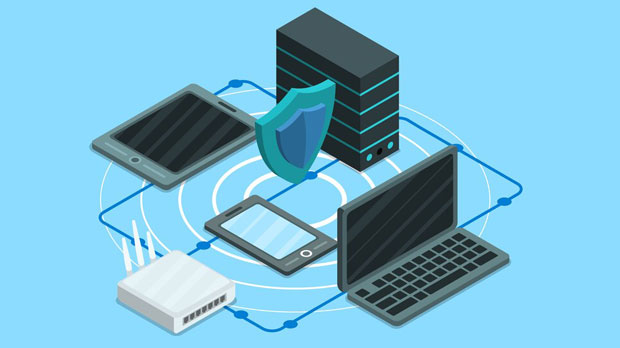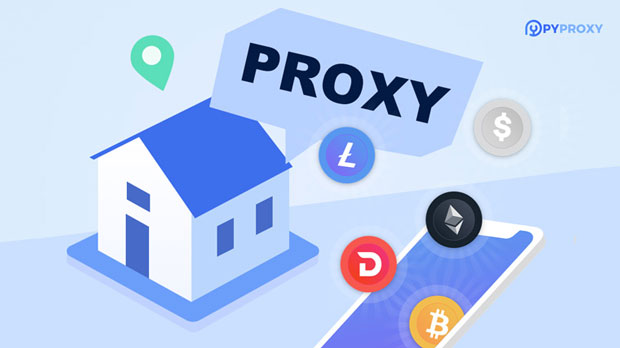In today’s digital landscape, using proxies for a variety of purposes—such as web scraping, security testing, and market research—has become a common practice. Among the most critical factors that users evaluate when choosing a proxy provider are speed and reliability, especially when switching between multiple regions. Two popular proxy services, IPRoyal and PYPROXY, are often compared for their performance in multi-region IP switching. Both services claim to offer fast and secure IP rotation, but which one actually performs better in terms of speed and efficiency? This article delves into an in-depth comparison of IPRoyal vs PyProxy, focusing on their performance when it comes to switching IPs across various regions. Understanding Multi-region IP SwitchingBefore diving into the specifics of IPRoyal and PyProxy, it’s important to understand what multi-region IP switching is and why speed matters. Multi-region IP switching refers to the ability to seamlessly rotate through multiple IP addresses located in different geographical locations. This is often required for tasks such as:- Web scraping: To avoid detection and IP blocks, rotating IP addresses from different regions can ensure that the scraping operation remains anonymous and uninterrupted.- Security testing: When testing websites or applications for vulnerabilities, accessing them from multiple regions can simulate real-world attacks.- Market research: Different regions may have different pricing or content available, so businesses often need to view data from various locations to get a comprehensive picture.In these cases, the speed at which the proxy service can rotate through these IPs across regions becomes crucial. A delay in IP switching can lead to slower results, impacting the user experience or the effectiveness of the task.IPRoyal vs PyProxy: Key Features and PerformanceBoth IPRoyal and PyProxy offer proxies designed to support various use cases, but they differ in how they approach multi-region IP switching. Below, we break down their features and performance to better understand which service excels in speed and efficiency.IPRoyal: Features and SpeedIPRoyal offers a wide array of proxies, including residential, datacenter, and mobile proxies. For multi-region IP switching, residential proxies are the most popular choice, as they offer real user IPs, reducing the chances of getting blocked or detected.- Geographical Coverage: IPRoyal claims to provide proxies in over 150 countries, offering access to IPs from a wide range of regions. This extensive coverage is beneficial for users who need to rotate through IPs in different areas quickly.- Speed and Stability: IPRoyal’s residential proxies are generally stable, but the speed of IP switching can vary depending on the region. Users in remote or less-populated areas may experience slower IP switching times due to fewer available IPs. However, in more densely populated regions, IP switching is generally faster.- Reliability: The proxy service boasts a high uptime, which is critical for continuous and uninterrupted IP switching. However, some users have reported intermittent slowdowns during peak usage times, particularly when switching between regions with high demand.PyProxy: Features and SpeedPyProxy, on the other hand, focuses on providing proxies for developers and businesses looking for fast, automated IP rotation. While PyProxy supports both residential and datacenter proxies, it’s known for its emphasis on speed, making it an appealing choice for users who need rapid multi-region IP switching.- Geographical Coverage: PyProxy also offers global coverage, with proxies available in various countries. While it might not have the same extensive reach as IPRoyal, PyProxy ensures that its proxies are distributed across major regions, making it suitable for users who need IPs from key areas like North America, Europe, and Asia.- Speed and Performance: PyProxy is designed with a focus on low-latency performance. Many users report that PyProxy delivers faster IP switching times compared to IPRoyal, particularly when switching between regions. The service has a reputation for minimizing delays and ensuring smooth transitions between IPs.- Automated Switching: One of the standout features of PyProxy is its automated IP switching capabilities. Users can set up automated tasks to rotate through IPs without manual intervention, which is ideal for high-frequency tasks like web scraping or data harvesting.Speed Comparison: IPRoyal vs PyProxyWhen comparing the speed of IP switching between IPRoyal and PyProxy, several factors come into play. The key elements include:1. Proxy Type: Both IPRoyal and PyProxy offer residential and datacenter proxies, but residential proxies tend to be slower due to their reliance on real user IPs. However, they are generally less likely to be detected or blocked. PyProxy has a reputation for optimizing its residential proxies for faster switching, which may give it an edge in speed. 2. Server Locations: The geographical location of the proxies is crucial for speed. IPRoyal has a more extensive network of proxies spread across numerous countries, but this doesn’t always translate into faster IP switching, particularly in less-populated areas. PyProxy, with its focus on major regions, may perform better when rotating through IPs in high-demand locations like the US or Europe.3. Latency: PyProxy is known for its low-latency performance. Its servers are optimized to minimize the delay between IP switches, which is vital when high-speed rotation is required. While IPRoyal is competitive in this area, some users report higher latency, especially when switching across distant regions.4. Load Balancing and Traffic: Both services employ load balancing to ensure that IP switching remains smooth, but PyProxy has a more automated and dynamic load distribution system that adjusts in real-time, ensuring that there are fewer delays. IPRoyal, while stable, may experience occasional slowdowns during peak traffic times, affecting the speed of IP switching.Real-World Use Case ScenariosTo better understand the performance of IPRoyal and PyProxy in multi-region IP switching, let’s examine some real-world use cases:- Web Scraping: If you’re scraping data from multiple websites that require IP rotation, speed is crucial. In this scenario, PyProxy’s faster switching times would likely provide a better experience, especially if you’re targeting regions with high traffic, like the US or Europe. IPRoyal, while reliable, might experience some lag when rotating between regions with lower proxy density. - Security Testing: For businesses conducting penetration tests or vulnerability assessments, rapid and reliable IP switching is essential. PyProxy’s automated IP rotation would allow for more efficient testing across multiple regions. However, IPRoyal’s extensive proxy network might still be advantageous for tests that require more diverse geographical access points.- Market Research: When conducting market research, businesses may need to switch between regions frequently to monitor regional pricing and content variations. PyProxy’s speed in switching between IPs would make this process more efficient, while IPRoyal’s broader coverage would provide access to a wider range of local IPs for more granular research.Conclusion: Which Service is Faster for Multi-region IP Switching?In conclusion, when it comes to multi-region IP switching, PyProxy generally outperforms IPRoyal in terms of speed. PyProxy’s focus on low-latency, automated IP switching ensures faster and more seamless transitions between regions, making it a better choice for users who prioritize speed in tasks like web scraping or market research. However, IPRoyal offers a more extensive global network, which may be beneficial for users who need access to a wider variety of regions.Ultimately, the choice between these two services depends on your specific needs: if you require fast, automated IP switching across major regions, PyProxy is the better option; but if you need broader geographical coverage, IPRoyal may suit your needs better, with some trade-off in speed.
Oct 24, 2025



































































